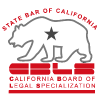Table of Contents
What is a judgment lien?
A bankruptcy discharge will wipe out your personal liability on a judgment so long as the debt is dischargeable. Some relatively common non-dischargeable debts are those for taxes and child or spousal support. Since you no longer are personally liable for the debt, a creditor will not be able to collect against you personally by wage garnishments, bank levies, or other enforcement actions. However, if a creditor records an abstract of judgment, that debt will become secured against your home and will survive bankruptcy unless the lien is “avoided.”
Secured debts like this will survive the discharge unless you file a motion to avoid the lien. If this motion is not filed, if you were to sell your home, the creditor would receive a cut of the proceeds to satisfy the debt even though they could not collect against you personally. A particularly aggressive creditor could also request that the county sheriff force the sale of your home.
Determining whether a lien can be avoided
Whether you can avoid a judgment comes down to simple math. There are four essential facts that you will need to know, all of which are determined as of the date your case is filed – not when the motion is filed:
- The value of your home
- The balance on your mortgage
- The amount of your exemption
- The amount of the judgment
The value of your home and mortgage balance will determine the amount of equity in the property. The amount of exemption will determine how much of that equity is protected. And lastly, the amount of the judgment will determine how much debt, if any, will remain after the motion is granted.
The most common exemption used in these motions is the homestead exemption which, as of January 2021, is between $300,000 and $600,000 in California. However, if your case was filed before January 2021, you will have to utilize the old exemptions. These exemptions were $75,000, $100,000, and $175,000, depending on whether you filed as single, a family unit, or over 65+ or disabled.
Since you are entitled to your full exemption, the motion to avoid lien will reduce the amount of the lien to the extent that this exemption is impaired. The easy way you can think of this is that the exemption will go in between the mortgage and the judgment. If the exemption fully protects your equity, then the lien will be completely wiped out. If there is some equity that is not protected, then the judgment lien will be reduced to that amount.
Example #1 – No unprotected equity
- Value of property = $500,000
- Mortgage balance = $200,000
- Exemption = $400,000
- Judgment = $500,000
Since the equity in the property is $300,000, and the exemption is $300,000, then all of the equity is protected and the judgment will be completely wiped out.
Example #2 – Some unprotected equity
- Value of property – $500,000
- Mortgage balance = $200,000
- Exemption = $100,000
- Judgment = $500,000
Since the equity in the property is $300,000, and the exemption is $100,000, then the judgment will be reduced to the remaining $200,000
Example #3 – Upside-down property
- Value of home: $300,000
- Mortgage balance: $400,000
- Exemption: $1 (yes, just one dollar)
- Judgment: $500,000
Even though there is no equity, you still must claim an exemption since that is one of the essential elements. Since there is no equity in the property, and you have that $1 exemption, then the lien will be completely wiped out to ensure that your exemption is not impaired.
Motion to Avoid Lien Calculator
How to avoid a lien in bankruptcy
Preparing the motion
You may file a motion to avoid lien at any time during your case. In the Central District of California, the Court has provided an optional form that addresses the most common lien avoidance situations. However, some less common situations will require a more custom-tailored motion to address those other issues. The facts that you will need to prove in the motion include the following:
- Value = an appraisal of the property as of the date the case was filed
- Mortgage = a mortgage statement
- Exemption = a copy of your Schedule C list of exemptions
- Judgment = a copy of the abstract of judgment
It is also a good idea to include declarations to include additional evidence and ensure that all of the evidence presented is admissible. You may need to state the exact procedure you followed to obtain the mortgage statement and abstract of judgment to “authenticate” these documents. Additionally, although most appraisals will include a statement that the appraiser affirms under penalty of perjury that the contents are true and correct, some do not contain this language. If the appraisal does not include this affirmation, you will need to draft a separate declaration for the appraiser to sign.
Filing and obtaining an order
Once you’ve assembled these documents and filed them with the court, you will need to serve the motion on the creditor who has the lien, and they will have 14 days to oppose the motion.
If the creditor does not file a response, you can file a declaration stating this and then submit an order to the judge. If the creditor does file an opposition, you will need to file a response addressing the issues they have raised. This entire process can become a lot more complex once the motion is opposed.
Once you have the signed order, you will need a certified copy of the order obtained from the bankruptcy court clerk’s office. You will then need to record the order by providing the certified copy to the county recorder.
Avoiding a Lien in a Closed Case
If your case is already closed, you can still file a motion to avoid the lien, but you will first need to request that the court reopen the case. Courts will almost always grant these motions so long as you can clearly explain why you are opening the case and that there is a likelihood that you will be successful with your motion. To show that you will likely be successful, you may want to highlight the essential elements described above.
Since these essential elements are determined as of the date your case is filed, you will need to do a bit of extra work to obtain these facts. You will need a mortgage statement from when your case was filed and an appraisal showing your home’s value from when the case was filed. These appraisals are known as “historical” or “retroactive” appraisals. Everything else is the same as if you were to file the motion when your case was originally open.
Avoiding a Lien on Sale Proceeds
It is relatively common that a judgment lien is not discovered until someone is in the process of selling their home. Since the timeline of reopening a case and filing a motion to avoid a lien will take around a month or more, this delay would put the sale at risk of falling through.
In a case that Halli Heston of our firm brought to the Ninth Circuit Court of Appeals, this was the situation our client faced. Culver, LLC v. Chiu (In re Chiu), 304 F.3d 905 (9th Cir. 2002). The Court reasoned that although the lien attached to the proceeds of the sale, since the exemption would also transfer to these proceeds, the analysis was the same and the lien could be avoided.
In most situations like this, the sale will close, and the escrow company will hold the funds that would otherwise go to the creditor in the absence of a lien avoidance. Once the motion is granted, a certified copy of the order will need to be provided to the escrow company to release the funds.
Lien Avoidance in Chapter 13 Bankruptcy
In a Chapter 13 case, the usual procedure for avoiding liens is that the motion will be filed at the onset of the case and follow the same basic procedures as applicable in Chapter 7. However, once the motion is granted, the lien will be converted to unsecured debt and join the other unsecured creditors. Since the unsecured creditors in Chapter 13 are not entitled to any certain amount of payment, the actual amount the creditor receives may be minimal, if anything.
Related posts:
- How to Keep a Vehicle in Bankruptcy through §722 Redemption
What debts, if any, can be reorganized or modified in a Chapter 7? In the... - New 2021 California Bank Levy Exemptions
The bank account levy laws prior to 2021 It used to be that if a... - When Is A Good Time To File Your Bankruptcy?
Timing can me an extremely important factor in your case. The most common timing issues...









